NIL
Amateur Hour Is Over: College Athletes Can Get Paid by Schools
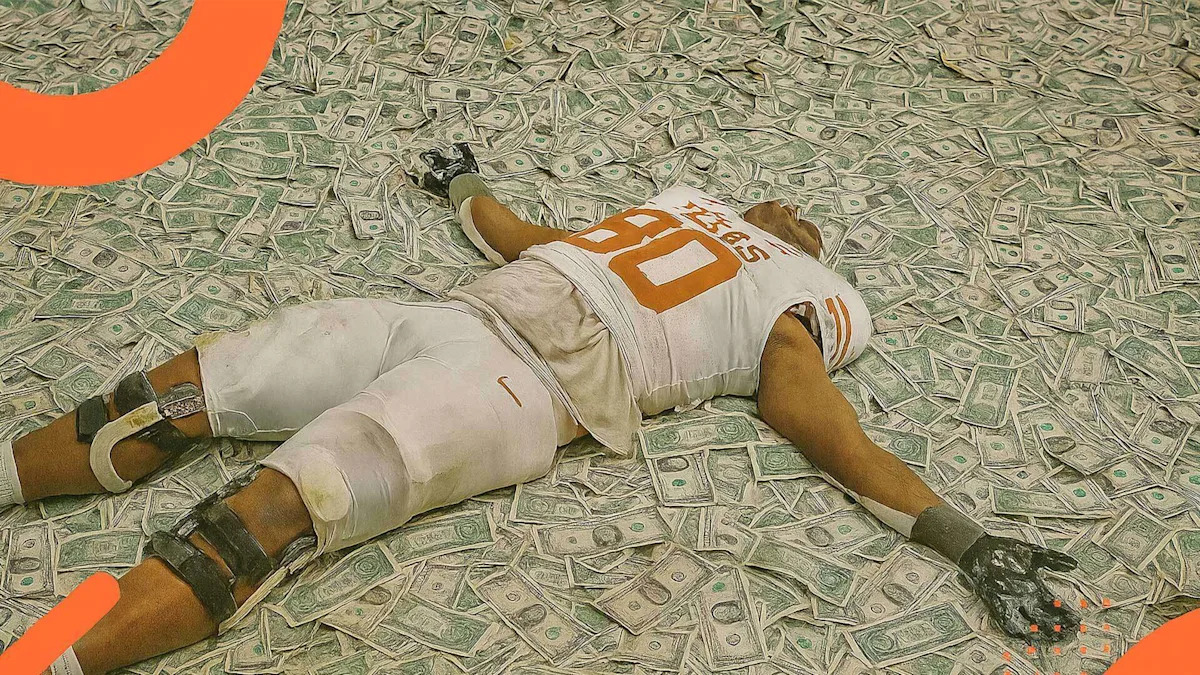
Good morning and welcome to another edition of Free Agent! Hold onto your buckets and your babies—this might be a wild ride.
College sports is officially entering a new era. Amateurism is over and professionalism is (mostly) here. Athletes can officially get paid directly by their schools without a workaround involving boosters or a name, image, and likeness (NIL) collective. Instead of our usual format, the newsletter this week is focused on this monumental change.
Advertisement
But first, I want to thank everyone who voted in our survey last week about who you’re rooting for in the NBA and NHL finals. Free Agent readership was surprisingly evenly split in both series. Shoutout to the fan who said “Seattle kid. Anyone but Thunder.” You’ll have your team soon, I’m sure. As for hockey, I was amused by this response: “I want Ron Desantis to have more Stanley Cups than Canada.” Three down, 40 to go.
Late on Friday, a federal judge gave final approval to a settlement in House v. NCAA, bringing to an end three antitrust cases against the NCAA and power conferences. It’s a huge change: Starting July 1, college sports will spend a decade (at least) in a revenue-sharing system, with schools directly paying athletes for their NIL. Next school year athletic departments will be allowed to pay a combined $20.5 million to athletes across all their sports, with the number rising in the future. (The NCAA and power conferences will also pay almost $2.8 billion in damages to athletes who, dating back to 2016, weren’t allowed to sign NIL deals.)
Advertisement
I talked to Mit Winter, an NIL attorney at Kennyhertz Perry, about how all of this is going to work. Hopefully this answers all the questions you might have about the new system, although a lot of it is still in limbo. I’ve been following this closely and I still learned a lot from our conversation. If you have lingering questions, email me at freeagent@reason.com and I’ll try to figure out an answer for you.
Q: With final approval of the House settlement, colleges will be able to directly pay athletes for the first time. Give us a brief breakdown of how these payments are going to work.
A: Looking forward for college athletics, schools will be able to directly pay their athletes NIL compensation. So they are actively entering into contracts now with their athletes that spell out, “All right, here’s how much we are going to pay you for the use of your NIL in various ways.” That’s obviously a change from how things have worked in the past in college athletics where the cardinal rule was, “Schools, you cannot pay your athletes.”
Q: But the athletes still aren’t technically employees, so that’s causing some other complications, right?
A: Correct, they’re not currently considered employees. These agreements they’re entering into with schools are just NIL licensing agreements. Sometimes they include a services component as well, where the athlete might make appearances or sign autographs or something like that.
Advertisement
Q: But there are some new restrictions on outside NIL deals with boosters?
A: In addition to now allowing schools to directly pay their athletes, the House settlement also contains some new rules around deals athletes can do with NIL collectives and boosters. Athletes will have to disclose to a new clearinghouse entity called the College Sports Commission all third-party NIL deals they do. The College Sports Commission is contracted with Deloitte to do this review process of all of the deals.
If an athlete submits a third-party NIL deal and it’s determined that the deal is with an associated [to the school] entity or individual, then there’s a couple of extra layers of review of that deal. First, the deal has to be for a valid business purpose. Once that determination is made, then the next overview Deloitte will be performing is, “Okay, is the amount being paid to the athlete within what’s being called an appropriate range of compensation for the services being provided by this specific athlete?”
But if Deloitte determines either the deal’s not for a valid business purpose, like they think it’s just a “pay-for-play” booster deal in disguise, or if the amount of compensation being provided to the athlete is not within the appropriate range of compensation, then Deloitte will notify the College Sports Commission that, “Hey, there’s a problem with this deal.” Then at that point it’s up to the College Sports Commission to say, “All right, athlete, you can go ahead and do this deal if you want to, but you might be ineligible to participate in college athletics.”
Advertisement
Q: Some believe this might lead to the old ways of under-the-table payments and recruiting violations.
A: It’s a definite possibility because the amount of NIL compensation that schools could pay their athletes is going to be capped at, for the first year, $20.5 million for the entire year for all of the school’s athletes, so not just the football team. And there are some football teams making well over $20 million in NIL compensation from booster and collective deals for this upcoming season.
So you can see if you have a football team right now taking $30 million, and then in the future, the cap for all of the school’s athletes is going to be $20.5 million, there’s obviously a $10 million gap right there, that if you can’t do it through legitimate deals, third-party NIL deals and Deloitte is shooting down all these third-party deals, that’s when you might go back to under-the-table payments from boosters to win recruiting battles or keep a guy at a school.
Q: Talk to us about this from the conference level.
A: Every Division I school, no matter what your athletics revenue is, you’re going to be able to pay [athletes] up to $20.5 million. That money can come from any source that the university can use to find that money. Obviously, it’s going to be easier to come up with that money for some Division I schools than others. Big Ten and SEC schools might have the easiest time just because the amount of TV revenue those conferences receive and then distribute out to their members is higher than any other conference, including the Big 12 and the ACC. But schools, they’re going to be heavily reliant on donors for sure, but then there are other potential strategies they’re going to use.
Advertisement
There’s a lot of talk about private equity or private capital that some schools might access. There are businesses out there that are very heavily focused now on helping schools generate revenue through different types of creative partnerships, so it’s going to be all over the map in terms of how schools are trying to come up with this new $20.5 million. And then you’ll have some schools that will cut staff. Some have already cut staff, including Oklahoma, who’s an SEC school, obviously, so they’ve cut staff. You’ve had some schools announce they are dropping a few sports, like tennis programs have been dropped in some places, swim and dive teams. So it’s going to vary from school to school on how they come up with this money.
Q: Now, back to the athletes themselves, there are no changes to the transfer system, right? Athletes are still kind of on these one-year contracts, with a fair amount of ability to move at will?
A: Yes, correct. The transfer rules are going to stay the same, they’re not affected by the House settlement at all. Although schools and conferences would love to be able to put some more transfer restrictions back in place and they’re hopeful that Congress will pass a law that gives them an antitrust exemption that would then allow them to put some of those transfer rules back in place because courts have held right now that those transfer rules violate antitrust law.
Some of the contracts that schools are entering into with their athletes, they have some provisions that are trying to prevent as much movement as there has been, like buyouts and clawbacks and things like that. [It] remains to be seen whether those will be effective or not in limiting movement, so we’ll just have to see how that plays out.
Advertisement
Q: There are already some lawsuits challenging the current NCAA eligibility rules, but what lawsuits are coming next, or are already in play after the House settlement?
A: A big one’s going to be Title IX. There will be a lot of Title IX lawsuits, because as we talked about earlier, [schools] will be able to pay out $20.5 million to their athletes, and most schools are planning on paying out, at least if you are a [Power Four] school with a football team, are paying out 75 percent to 80 percent of that $20 million to the football team, around 15 percent to the men’s basketball team, maybe 5 percent to the women’s basketball team, and then 5 percent to other sports, which might be softball, baseball, whatever other sport a school chooses—85 percent to 90 percent of that $20 million is going to go to male athletes. Some people think that’s not in compliance with Title IX, other people think it is. It’s a gray area right now, there’s no black-and-white law. That will be litigated probably in lots of places and there will be probably lots of lawsuits filed against schools on that issue.
I also think we will see some litigation related to the salary cap, because it was not agreed to by a player’s association where, like in pro sports, the salary caps and things like that are collectively bargained with a players association, which makes them exempt from antitrust law. But this salary cap in college athletics is not going to be exempt from antitrust law. So future college athletes coming into college athletics will be able to bring damages, lawsuits, challenging that salary cap, so I think we’ll definitely see some of that.
I think we’ll probably see some more employment litigation for determination that college athletes are employees. There’s already one big case pending on that issue called the Johnson v. NCAA case in federal court. It said college athletes can be employees, it didn’t say they are. It said, “They can, and here’s the test to determine whether they are.” That was an appellate court, it’s now down at the trial court level to actually make that determination. But I definitely think we’ll see some more of that litigation, especially now that you have the schools contracting with athletes. It potentially makes that employment argument stronger than it was before.
Advertisement
This interview has been condensed and edited for style and clarity.
Lots of great candidates this week that you’ve probably already seen, like the Tyrese Haliburton game-winner, a brawl in the Stanley Cup Finals, and perhaps the best home run robbery you’ll ever see (the A’s still lost). But here’s a wild golf shot you probably missed (and that wasn’t even the craziest golf shot this weekend).
That’s all for this week. Enjoy watching the real game of the weekend, the UFL championship game featuring the D.C. Defenders against the Michigan Panthers (Saturday, 8 P.M., on FOX). Many are calling it the Jason Bowl due to my dual loyalties.
The post Amateur Hour Is Over: College Athletes Can Get Paid by Schools appeared first on Reason.com.
NIL
Josh Pate defends Joel Klatt amid G5 backlash, proposes second tier to College Football Playoff

FOX Sports analyst Joel Klatt found himself in a social media firestorm after comments he made about the Group of Five on a podcast appearance on Next Round Live. Clips of that interview quickly went viral with short snippets of some of the quotes.
The gist of those snippets suggested that Klatt was anti-G5, to the point of wanting the G5 kicked out of the College Football Playoff. Klatt intimated that the only thing keeping the G5 in the playoff currently is the threat of litigation.
College football analyst Josh Pate had his own thoughts on Joel Klatt’s take. He mostly came to the defense of the suddenly targeted analyst.
Pate first played a couple clips from Klatt’s appearance in their entirety. That offered more full context.
“Some of that was insane, I’m going to grant you that,” Pate said of Klatt’s points. “I just want to say the foundation of it I at least understand. The foundation of it is sound. Not all the parts of it. The foundation of it is sound.
“Couple of quotes there. No. 1, the G5 is in the College Football Playoff to avoid litigation is basically true.”
Pate lambasted the use of quote edits in condensing Joel Klatt’s much larger point into a few soundbites. He tried to explain how that’s misleading to his viewers.
“You know sometimes how you see a snapshot or a small soundbite of something and you get outraged by it and then you go on to learn the context of it two weeks later and you’re like, ‘Wow, I probably shouldn’t have gotten as outraged as I did over that,’ Pate said. “That is what is happening to Klatt. Admittedly he brought a lot of this on himself. …
“Now, what you probably saw was you probably saw quote edits like this or quote graphics like this. And if you’re listening on podcast just imagine scrolling through your social feed and there’s a picture of Klatt, looks like he’s somewhere sunny and happy and there’s a quote at the top, and it says, quote, ‘We don’t want Cinderellas. We want the best teams playing each other at the end. It’s the dumbest tournament and the least fair tournament in all of sports.’”
That part from Joel Klatt, obviously, was what many detractors latched onto. But it doesn’t take away from Klatt’s overall point about the G5, Pate pointed out.
So all the moaning over James Madison being in the playoffs is for naught. That’s just the way the current structure is set up.
“They are present in the playoff, they’re granted an auto bid in the playoff because if they are not then lawsuits will be filed immediately,” Pate said. “So that part’s accurate.
“Now whether or not you think it’s morally sound that they’re included in the playoff, that’s your own opinion. He’s got his, I’ve got mine, you’ve got yours. But he is right. Because in no other merit-based world where we just judged these teams on a static scale of quality, of resources and therefore what you do with the resources, and the results on the field and strength of schedule, in no world would James Madison be in the playoff. But the parameters of the playoff right now are that we take the five highest-ranked conference champs. So by every current rule James Madison is in the playoff and should be in the playoff. I don’t disagree with that. Tulane is in the playoff and should be in the playoff. I don’t disagree with the structure. I don’t disagree with the body of the playoff this year based on the current rules.”
So what’s the solution? Well, Joel Klatt also offered an answer for that. It just didn’t happen to go viral with the other stuff.
Klatt believes the G5 should effectively break off from the power conferences and host its own playoff. It would be a playoff tier between the FCS and the FBS.
“That’s been the same point that’s been made on my show,” Pate said. “So you notice if you really hated the G5 you’d just say, ‘Piss on the G5.’ That’s not what he did, despite the fact that that part didn’t get shared widely and it’s not what I’ve ever done on this show.
“Any time you have a problem with something, you ought to have a solution for it. So if your problem is, ‘Man, it makes little sense that we’ve got 136 teams pretending to play the same caliber of the sport’ you need to have a solution. That solution he just presented is the same one we’ve shared on this show, and that is a G5 playoff.”
NIL
How NIL has transformed Ohio State’s recruiting from star-chasing to strategic roster building
COLUMBUS, Ohio — The days of simply collecting as many five-star talents as possible in college football recruiting are over.
In a revealing Buckeye Talk podcast episode, Ohio State analysts Stephen Means and Andrew Gillis detailed how the program has shifted to a more sophisticated “roster construction” approach that mirrors NFL team building more than traditional college recruiting.
“I think that because the financial aspect has come into this but also just logical roster building that has become more of a focal point than star, star, star, star, stars,” explained Stephen Means. “Because for a long time, college football was like, get as much talent as you humanly can, develop it, cuz you were living in a world where the top 1% of college football had all the talent. And that’s not true anymore.”
This fundamental shift in philosophy is perhaps most evident in how Gillis described Ohio State’s running back recruiting needs for the 2027 class. While five-star David Gabriel Georgees tops their board, the approach is more nuanced than just stacking elite talent.
“If they got three five stars running backs, the odds that we got on this podcast and said that’s actually probably not that good is higher than it might seem because we were saying why is your asset management this? Like because hey, look at your your receiver recruiting was down. You couldn’t have spent some of that money on a receiver,” Gillis explained.
The financial component of recruiting has transformed how Ohio State approaches each position group and recruiting class. It’s no longer just about who’s the best player available, but whether investing heavily in one position might shortchange another.
“It is a math equation. It is a money equation at this point. You’re not going to go get three five stars at running back in a single class,” Gillis emphasized.
Means further elaborated on how NIL money has forced this change: “You can’t pay a fivestar recruit, fivestar recruit money and then have the guy sitting on the bench because there’s another guy with there’s only so much money to go around.”
This strategic approach has Ohio State looking at players through different lenses: “ready to go” immediate contributors (typically five-stars and top-100 recruits), “developmental” prospects (usually ranked 200-350 nationally), and “depth” pieces who might be ranked lower but fill specific roles.
The analysts identified several instances where this approach is evident in Ohio State’s 2027 planning. At quarterback, they’re content with a developmental prospect in Brady Edmonds rather than chasing another five-star. At wide receiver, despite already having five-star Jir Brown committed, they believe Ohio State needs another elite receiver plus two depth pieces to properly structure the room.
“Now we are talking about roster construction,” Means said. “And the reason why we structured it this way is okay, they went and got a devel they have a developmental quarterback in 2027. They probably need a ready to go quarterback in 2028 and they probably need a depth quarterback in 2029. And the cycle continues, right?”
This staggered approach ensures Ohio State will have players at different stages of development at every position, creating a sustainable pipeline of talent ready to contribute when needed.
“Everybody everybody’s running the same race, but they can’t be running it at the same pace or you’re not going to have a team to field every single year,” Means added.
The conversation revealed how Ohio State’s recruiting approach now more closely resembles NFL roster management, with considerations for “salary cap” (NIL budget), positional value, and development timelines all factoring into decisions that previously might have been simply about collecting the highest-ranked players available.
As college football continues to evolve in the NIL era, this strategic roster construction philosophy may become the new standard for elite programs looking to maintain sustainable success.
Here’s the podcast for this week:
NIL
Texas Tech announces football staff contract extensions
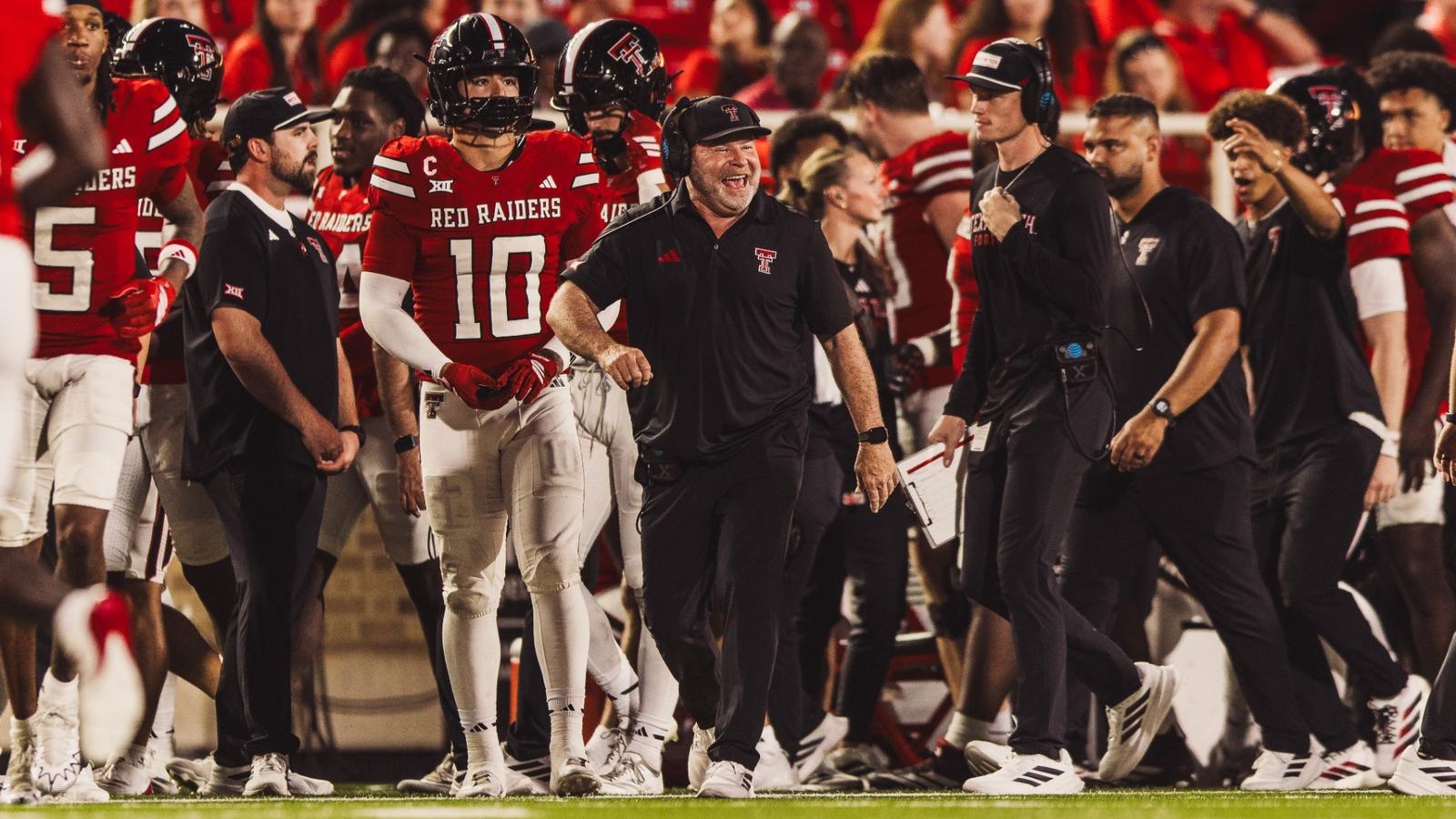
LUBBOCK, Texas – Texas Tech announced Tuesday it has come to terms on contract extensions for four key members of its football coaching staff: general manager James Blanchard, offensive coordinator Mack Leftwich, associate head coach and special teams coordinator Kenny Perry and defensive coordinator Shiel Wood.
Texas Tech agreed to the extensions with Blanchard and its three coordinators in recent weeks, pushing each of their contracts through the 2028 season with significant financial investments included as well as a revised buyout structure. McGuire, himself, agreed to a new seven-year contract following the regular season, only days prior to leading the Red Raiders to their first Big 12 Conference title in school history.
“I appreciate Kirby Hocutt and our administration for proactively investing in the future of our football program,” McGuire said. “Our expectation is to compete annually for championships with this staff and the resources we have in place here at Texas Tech. While we still have goals in front of us this season, we’re thankful to have the support of an incredible fan base and administration that believes strongly in the future of this program.”
Texas Tech enters the College Football Playoff Quarterfinal at the Capital One Orange Bowl with a 12-1 record, having already snapped the single-season school record for wins ahead of a potential matchup with either No. 5 Oregon or No. 12 seed James Madison. The Red Raiders are in the College Football Playoff for the first time in program history following a 34-7 rout over previously-No. 11 BYU in the Edward Jones Big 12 Championship.
Texas Tech has dominated opponents this season with all 12 wins coming by at least 20 points. In the process, the Red Raiders joined only Alabama in 2018 as the only teams in the Associated Press era (since 1936) to record 12 or more wins by 20-plus points prior to a bowl game. The 12 wins by that margin are already both a Texas Tech and Big 12 Conference record and are one shy of the FBS record that was set by Clemson in 2018.
The Red Raiders’ success has stemmed from all three sides of the ball with a stingy defense, another high-scoring offense and an aggressive approach on special teams. To date, Texas Tech is the only team in the country to rank in the top five for scoring offense (42.5), scoring defense (10.9), total offense (480.3 yards per game) and total defense (254.4 yards allowed per game). The Red Raiders are also the FBS leaders in both takeaways (31) and rush defense (68.5 yards allowed per game) and rank 10th for passing offense (289.4 yards per game), creating the balance McGuire desired upon his hiring four years ago.
On special teams, the Red Raiders have combined to block five kicks this season, which is tied with Penn State for the most in the FBS. Texas Tech has been among the most-aggressive teams in the country under Perry, blocking a total of 14 kicks during his four seasons, which leads all Big 12 programs during that span and ranks in the top five nationally. Texas Tech is also the only team in the country to rank in the top 20 for both kick return average and kickoff return defense this season, all while boasting a Paul Hornung finalist in running back and returner J’Koby Williams and a Lou Groza semifinalist in kicker Stone Harrington.
Perry was a charter member of McGuire’s staff upon his hiring prior to the 2022 season as he has been part of four-consecutive bowl appearances and 25 wins over Big 12 opponents, the most in the conference during that span. Both Leftwich and Wood are completing their first seasons on staff after arriving this past offseason on three-year contracts.
Kickoff for the Capital One Orange Bowl is set for 11 a.m. CT on New Year’s Day with coverage provided on ESPN and the Texas Tech Sports Network.
NIL
Paul Finebaum labels newly unemployed college football coach as ‘arrogant’
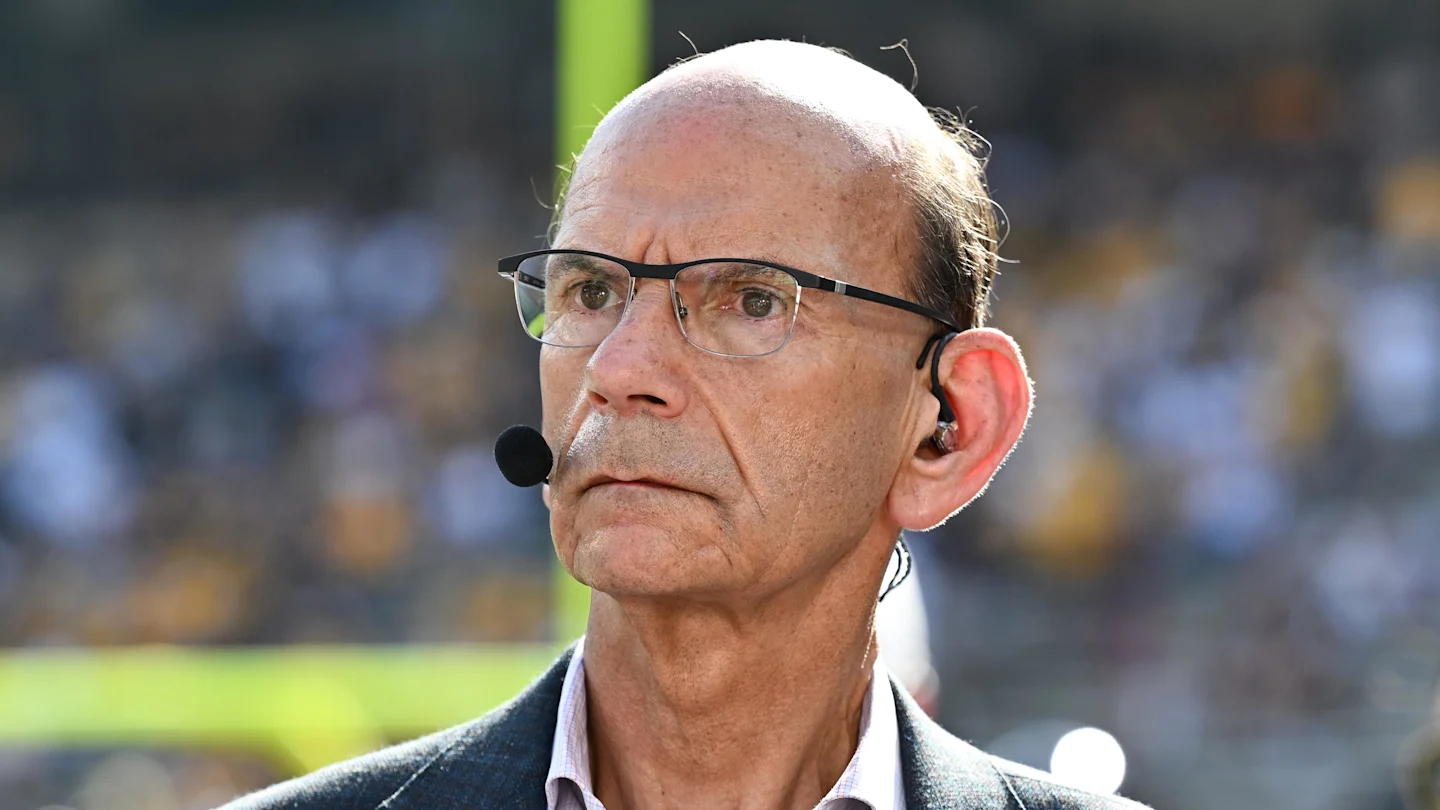
It’s no surprise that opinionated college football personality Paul Finebaum had some pointed responses when asked to describe certain college football coaches with just one word.
But his description for former LSU and Notre Dame coach Brian Kelly was particularly interesting.
“Arrogant,” Finebaum said.
We asked for one word to describe these top college football coaches, and @finebaum did not disappoint. pic.twitter.com/9KmL2oTMPJ
— Alabama Crimson Tide | AL.com (@aldotcomTide) December 16, 2025
In the spirit of the bit, he didn’t expound on the label, and many college football fans will surely nod at that description for the fired former Tigers coach. But what makes it interesting in this case is that Finebaum had Kelly as a weekly guest on Mondays during the football season and was usually very deferential to the coach for taking the time to join him.
“Coach, always appreciate you coming on, on Monday,” Finebaum said to close out Kelly’s last weekly appearance before he was fired on Oct. 26.
That said, he’s not wrong.
There’s a reason there has been almost zero buzz around Kelly’s name for any job opening this cycle, despite his status as the winningest active coach in college football with an official record of 297-109-2 across his tenures at Division II Grand Valley State, Central Michigan, Cincinnati, Notre Dame and LSU, with 21 more wins officially vacated from his Notre Dame record.
Kelly stunned the college football world when he left Notre Dame after 12 seasons and five straight double-digit-win seasons, including 11-1 in his final year there in 2021, for LSU while saying publicly that he wanted “to be in an environment where I have the resources to win a national championship.”
Never mind that Kelly had led Notre Dame to the national championship game after the 2012 season, losing to Alabama, and that, without him, the Fighting Irish reached the national championship game last year (losing to Ohio State).
He drew further ire when he said he was rooting for the Irish in that title game last year while noting that he had recruited many of the players involved.
Of course, Kelly’s LSU tenure seemed misfit almost from the start when he slipped into a fake southern accent during his introductory press conference.
1 day at LSU Brian Kelly has developed a southern accent pic.twitter.com/ct8PUpcEEE
— Pardon My Take (@PardonMyTake) December 3, 2021
Then there was the awkward video of Kelly showing off his dance moves with a recruit …
LSU coach Brian Kelly is dancing again — this time with TE target Danny Lewis.
Rate his dance moves 🕺👇
— Rivals High School (@RivalsHS) January 29, 2022
But the biggest problem was that Kelly simply didn’t win enough in Baton Rouge. He never reached a College Football Playoff with the Tigers, never finished higher than No. 12 in the final rankings, dipped to 9-4 last year and then 5-3 this season before he was fired.
NIL
Elon Announces 2026 Football Schedule
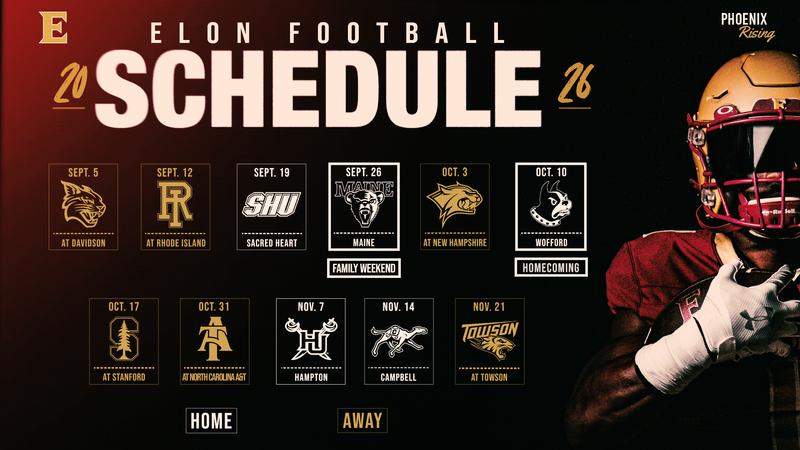

Football
Elon Athletics
Five-Game Home Slate, Road Trip To Stanford Highlight Schedule
ELON – Elon football head coach Tony Trisciani and the Phoenix released their 2026 football schedule Tuesday afternoon in conjunction with an announcement from the Coastal Athletic Association. The 11-game schedule is highlighted by a mid-October trip to Stanford and an eight-game CAA slate that gets started in week two.
The Phoenix will play five home games at Rhodes Stadium, including Sept. 26 for Family Weekend against Maine and Oct. 10 for Homecoming against Wofford.
Elon opens the season with two straight road games at Davidson (Sept. 5) and CAA foe Rhode Island (Sept. 12). The Phoenix defeated the Wildcats 55-7 in its 2025 home opener. The trip to Rhode Island will be Elon’s first since 2022.
Elon plays its home opener on Sept. 19 against CAA newcomer Sacred Heart and then closes out the month of September by hosting Maine on Sept. 26 for Family Weekend.
After completing the first half of its CAA schedule by returning to the northeast to face New Hampshire on Oct. 3, the Phoenix welcomes former Southern Conference rival Wofford to Rhodes Stadium for Homecoming on Oct. 10. It’ll serve as Elon’s only home game in October.
Elon will make its first-ever West Coast trip to face Stanford on Oct. 17, marking the fourth straight season it has clashed with an ACC opponent. A bye week will then lead to another October road game at North Carolina A&T on Halloween (Oct. 31).
The Phoenix closes its home schedule against Hampton (Nov. 7) and Campbell (Nov. 14) before playing its regular-season finale at Towson (Nov. 21), a squad it defeated 17-3 on the road in 2025.
2026 ELON FOOTBALL SCHEDULE
Aug. 29 – Bye
Sept. 5 – at Davidson
Sept. 12 – at Rhode Island
Sept. 19 – vs. Sacred Heart
Sept. 26 – vs. Maine (Family Weekend)
Oct. 3 – at New Hampshire
Oct. 10 – vs. Wofford (Homecoming)
Oct. 17 – at Stanford
Oct. 24 – Bye
Oct. 31 – at North Carolina A&T
Nov. 7 – vs. Hampton
Nov. 14 – vs. Campbell
Nov. 21 – at Towson
* Game times will be announced at a later date
SUPPORT THE PHOENIX
2026 Elon Football Season tickets are available now at ElonTickets.com. Fans can support Elon Athletics through the Phoenix Club.
STAY POSTED
For further coverage of Elon Football, follow the Phoenix on X (@ElonFootball) and Instagram (@ElonFB).
NIL
Patriots Lessons, NIL Chaos & His Post-NFL Career

In Season 2, Episode 10 of Portfolio Players presented by E*TRADE from Morgan Stanley, Brian Hoyer offers an inside look at how NIL (name, image, and likeness) collectives, and program infrastructure are transforming college football. As a longtime NFL quarterback and current partner at Legacy25, Hoyer brings a rare combination of on-field experience and operational insight into how the athlete pipeline is shifting.
He details why today’s college landscape mirrors professional sports, how donor fatigue and escalating expectations impact programs, and why collectives must prioritize financial education and long-term planning. Hoyer also explains the role of Legacy25 in supporting athletes across multiple sports and why non-revenue programs are increasingly turning to NIL as a competitive advantage.
Drawing from his years with the Patriots, Hoyer reflects on the leadership lessons, discipline, and organizational standards that now inform his post-football career. With thoughtful commentary on NIL, athlete development, and long-term sustainability, Hoyer paints a clear picture of where college athletics is heading and what it will take to succeed.
-

 Motorsports3 weeks ago
Motorsports3 weeks agoRedemption Means First Pro Stock World Championship for Dallas Glenn
-

 Motorsports3 weeks ago
Motorsports3 weeks agoJo Shimoda Undergoes Back Surgery
-

 NIL2 weeks ago
NIL2 weeks agoBowl Projections: ESPN predicts 12-team College Football Playoff bracket, full bowl slate after Week 14
-

 Motorsports6 days ago
Motorsports6 days agoSoundGear Named Entitlement Sponsor of Spears CARS Tour Southwest Opener
-

 Rec Sports3 weeks ago
Rec Sports3 weeks agoHow this startup (and a KC sports icon) turned young players into card-carrying legends overnight
-

 Rec Sports2 weeks ago
Rec Sports2 weeks agoRobert “Bobby” Lewis Hardin, 56
-
Sports2 weeks ago
Wisconsin volleyball sweeps Minnesota with ease in ranked rivalry win
-
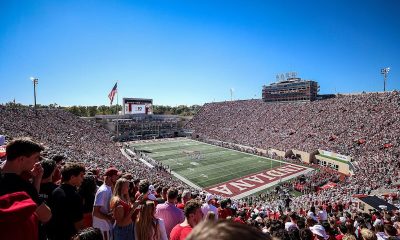
 NIL3 weeks ago
NIL3 weeks agoIndiana’s rapid ascent and its impact across college football
-

 Motorsports3 weeks ago
Motorsports3 weeks agoPohlman admits ‘there might be some spats’ as he pushes to get Kyle Busch winning again
-

 Motorsports3 weeks ago
Motorsports3 weeks agoWhat stands behind Ford’s commitment to becoming ‘the Porsche of off-road racing’































